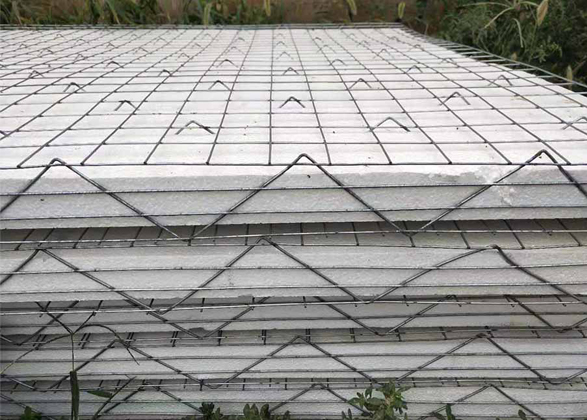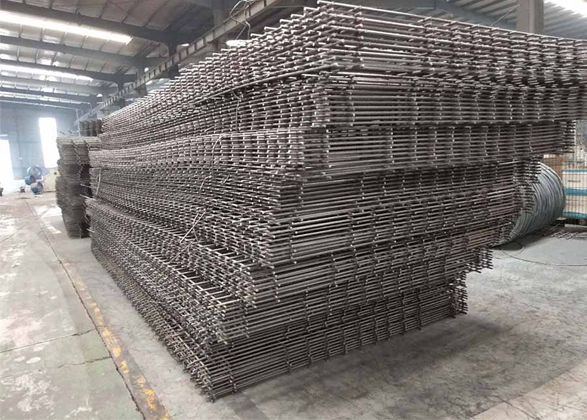Concrete is one of the most widely used construction materials due to its durability and versatility. However, in many applications, reinforcing concrete elements is essential to ensure long-lasting and robust structures. Whether you are working on a residential, commercial, or industrial project, reinforced concrete offers numerous benefits. In this article, we will explore five compelling reasons why you need to reinforce your concrete elements.
1. Enhanced Structural Strength
Reinforcing concrete elements significantly enhances their structural strength. Traditional concrete can withstand compressive forces well but is weak in tension. By adding reinforcement, such as steel bars or mesh, you improve the tensile strength of the concrete, allowing it to resist various loads and stresses more effectively. This increased strength ensures that your structure can handle heavier loads, reduce the risk of cracking, and provide a safer environment.

Concrete Elements Reinforced with Light Steel Mesh Framed Expanded Polystyrene (Eps) Panel
2. Improved Durability and Longevity
Another crucial reason to reinforce concrete elements is the improved durability and longevity they provide. Reinforced concrete can better withstand environmental factors such as weathering, corrosion, and chemical exposure. The reinforcement acts as a barrier, protecting the concrete from damage and extending its lifespan. This durability is particularly important for structures exposed to harsh conditions, such as bridges, highways, and coastal buildings.
3. Enhanced Flexibility and Adaptability
Reinforced concrete offers greater flexibility and adaptability in design and construction. The reinforcement allows for more intricate and complex architectural designs, enabling the creation of unique and innovative structures. Additionally, reinforced concrete can be molded into various shapes and sizes, making it suitable for a wide range of applications. Whether you are constructing a high-rise building, a parking garage, or an industrial facility, reinforced concrete provides the versatility needed to meet your specific project requirements.

Reinforcement Meshes
4. Cost-Effective Solution
While reinforcing concrete elements may initially seem more expensive, it is a cost-effective solution in the long run. The increased strength and durability of reinforced concrete reduce the need for frequent repairs and maintenance, saving you money over the life of the structure. Additionally, the enhanced structural integrity can lead to lower insurance premiums and increased property value. Investing in reinforced concrete ultimately provides a higher return on investment by minimizing future expenses and maximizing the lifespan of your construction.
5. Safety and Risk Reduction
Safety is paramount in any construction project, and reinforcing concrete elements plays a critical role in ensuring the safety of occupants and users. Reinforced concrete can better resist impacts, vibrations, and other dynamic forces, reducing the risk of structural failures and accidents. By reinforcing your concrete elements, you create a safer environment for everyone involved, from construction workers to end-users. Additionally, the increased strength and stability of reinforced concrete can withstand natural disasters such as earthquakes and hurricanes, providing added protection and peace of mind.
Frequently Asked Questions
Q: What materials are commonly used to reinforce concrete?
A: Steel bars (rebar) and steel mesh are the most commonly used materials for reinforcing concrete. Other materials, such as fiberglass and carbon fiber, can also be used for specific applications.
Q: Can I reinforce existing concrete structures?
A: Yes, existing concrete structures can be reinforced through various techniques such as adding external reinforcement, applying fiber-reinforced polymer (FRP) wraps, or using post-tensioning methods.
Q: How does reinforced concrete compare to other construction materials?
A: Reinforced concrete offers a unique combination of strength, durability, and flexibility, making it a preferred choice for many construction projects. While other materials like steel and wood have their advantages, reinforced concrete provides superior performance in various applications.
Q: Is reinforced concrete environmentally friendly?
A: Reinforced concrete can be environmentally friendly when using sustainable materials and practices. Additionally, its long lifespan and low maintenance requirements contribute to its overall sustainability.
Q: What are the main applications of reinforced concrete?
A: Reinforced concrete is used in a wide range of applications, including buildings, bridges, roads, dams, tunnels, and retaining walls. Its versatility and strength make it suitable for both residential and commercial projects.
In conclusion, reinforcing concrete elements is essential for enhancing structural strength, improving durability, providing flexibility, offering cost-effective solutions, and ensuring safety. Whether you are undertaking a small-scale project or a large infrastructure development, the benefits of reinforced concrete make it a valuable investment for any construction endeavor.
Heyou Wire Mesh is a professional manufactory for reinforcement mesh, reinforcing mesh, reinforced mesh. Just shoot us an email at sales@hysteelmesh.com and we’ll be happy to help.










